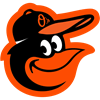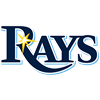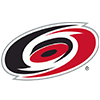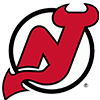Two weeks ago, we looked at some pitchers to target and fade within the first seven rounds of drafts. The broad criteria we were searching for in that article was both per-start scoring -- based primarily on the ability to work deep into games while racking up strikeouts -- and the ability to rack up volume across the course of the season. Unsurprisingly, the deeper we move into drafts, the harder it is to identify pitchers who have both season-long durability and high upside on a per-start basis. In this week's edition of the MLB Best Ball series, we'll take a look at pitchers worth targeting in the 12th round or later in Underdog ADP based on having one (or more) standout skills that mitigates some of the downside in their profiles.
Sign up for Underdog to receive a free 6-month subscription to RotoWire and first deposit match up to $100 with promo code RWMLB. Click here to claim this special offer now.
Strikeout rate
Tyler Mahle – ADP 178.3
Mahle started and ended the 2022 season in poor form, and on the surface he had an ugly 4.40 ERA while managing only 120.2 innings due to lingering shoulder problems. That's a heck of a way to start a sales pitch. However, there was a brief period during which Mahle showed he still had the skills that made him a successful pitcher in prior seasons, as he posted a 25 percent or better strikeout rate from May through July. Even without cherry-picking specific portions of the his first season in Minnesota, many of Mahle's overall skills remained intact. He maintained an 11 percent swinging-strike rate, and his fastball was very effective. That's led to a strikeout rate between 25 and 30 percent across the last three seasons, which would have placed him inside the top 15 in the league had he pitched enough innings to qualify in 2022. Regardless of preferred ERA predictor, Mahle deserved better last season as his SIERA was 3.88, xERA 3.49 and FIP 3.87. He's not priced with a bounce-back performance in mind in 2023, but that looks like a likely outcome.
Trevor Rogers – ADP 195.3
While Rogers ended the season on the injured list, that doesn't excuse the significant step back he took in 2022. Nearly every part of his skills profile declined last season, and both his 5.47 ERA and 1.50 WHIP were particularly hideous. After three seasons in the majors, his overall track record is spotty. On the other hand, he has strong prospect pedigree and delivered a superb 2021 campaign, during which he posted a 28.5 percent strikeout rate across 133 innings. That alone makes him worth taking a chance on at his currently depressed draft price. Spring training results should be taken with a grain of salt, but even after being crushed for eight earned runs in his start Friday to inflate his ERA, Rogers has still posted a 13:2 K:BB in 13 innings during the exhibition season.
Andrew Heaney – ADP 214.3
Rogers and Mahle present bounce-back profiles, and drafting them is making a bet that they'll return to something resembling their prior form. That's not the case with Heaney, as his health and home run problems are pretty well established at this point of his career. Instead, he's always had an above-average strikeout rate (career 25.4 percent) and took a significant step forward last season thanks to narrowing his pitch mix and combining his curveball and slider into a single pitch. If Heaney draws better luck with his health, he's almost certain to outperform his draft position based on his strikeout totals even if his ERA ticks back up toward four.
Quality Starts / Innings Pitched
Sean Manaea – ADP 163
Manaea has seen his strikeout rate and ability to suppress runs fluctuate significantly across the last three seasons, but he consistently takes the ball every fifth day and works deep into games on a regular basis. Even in 2022 when he posted a 4.96 ERA, Manaea racked up 16 quality starts after posting 15 in 2021. Underdog's scoring directly rewards both completed innings and quality starts with fantasy points, bolstering Manaea's value in a way that roto or category leagues do not.
Merrill Kelly – ADP 168.3
Since returning stateside in 2019, Kelly has thrown at least 158 innings in each of his three full seasons and has at least 180 innings pitched in two of those three campaigns. Last year, he outscored names many wouldn't expect including the likes of Logan Webb and Logan Gilbert, which was highlighted by 18 quality starts. If Kelly was priced in line with his output last season, he wouldn't be worth investing in because he's heavily reliant on batted-ball luck (BABIP and HR/9), which has fluctuated significantly in recent years. At his current ADP, fantasy teams don't need for him to produce at a standout per-start rate to be a worthwhile investment.
Adam Wainwright – ADP 213.6
Wainwright has turned in three consecutive seasons with an ERA below 3.75 and over 170 innings pitched. He presents some risk primarily because he's entering his age-41 season and his velocity took another step back in 2022. After sitting just below 90 mph in the latter stages of his career, his fastball hit just 88.1 mph last year. While new rules restricting the shift could hurt him, the Cardinals are an excellent defensive team that mitigates some of the risk that is presented by his lack of strikeouts. Unlike some of the other options listed above, Wainwright will be pitching for a winning team, so his per-start volume should also lead to plenty of opportunities for wins in addition to the quality starts.
German Marquez – 224.9 ADP
On the surface, the argument for Marquez is that drafting him in best ball formats allows managers to benefit from his away starts while skipping home starts at Coors Field without having to worry about manually moving him in and out of lineups. A deeper dive into his splits reveals his outcomes aren't that easy to separate, however, as he had a significantly better home ERA than on the road in 2021. The bottom line is that Marquez has shown the ability to provide above-average results for particular stretches of any given season, but they haven't come in a predictable pattern. That makes him unusable in managed leagues, but in best ball formats, there's no need to predict the starts in which he'll pitch well and which he won't. He has about as clean of a health track record as one could hope for out of a pitcher, and he's a lock to stick in the Colorado rotation.










































